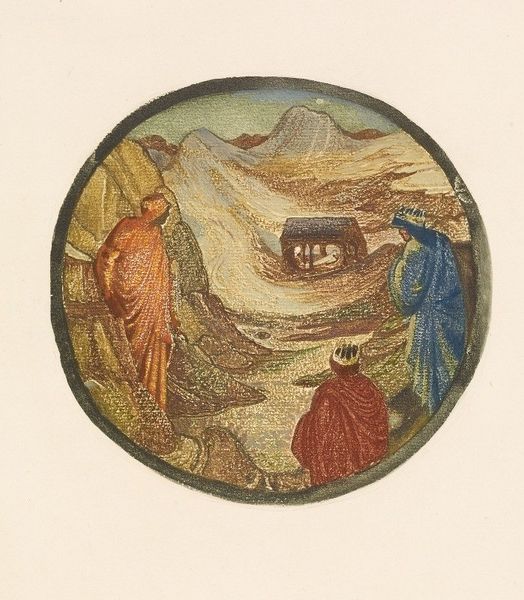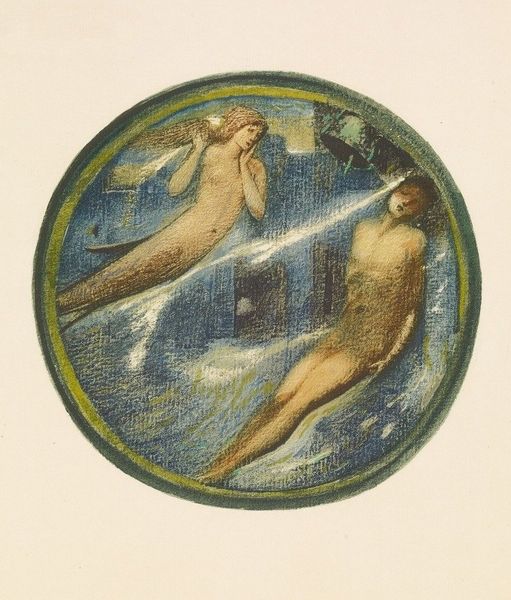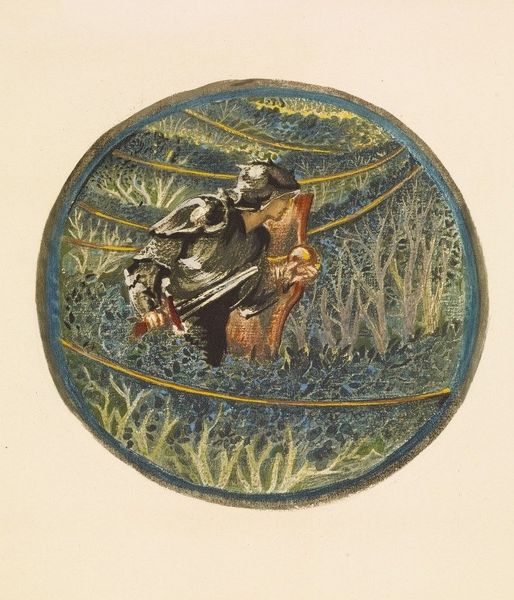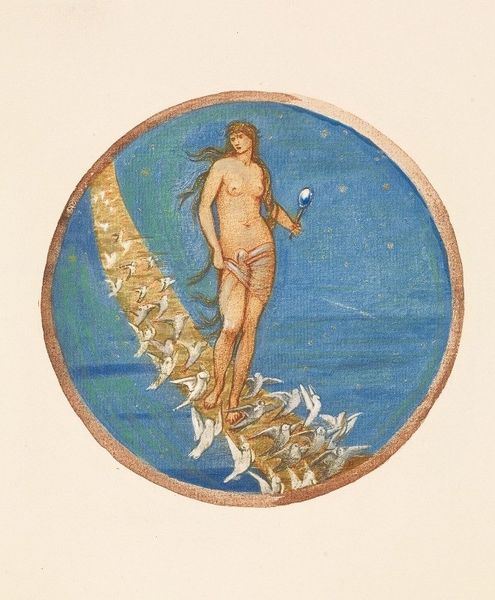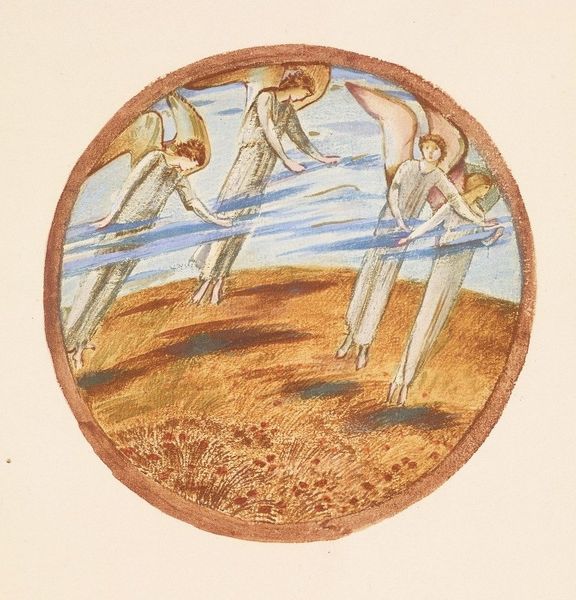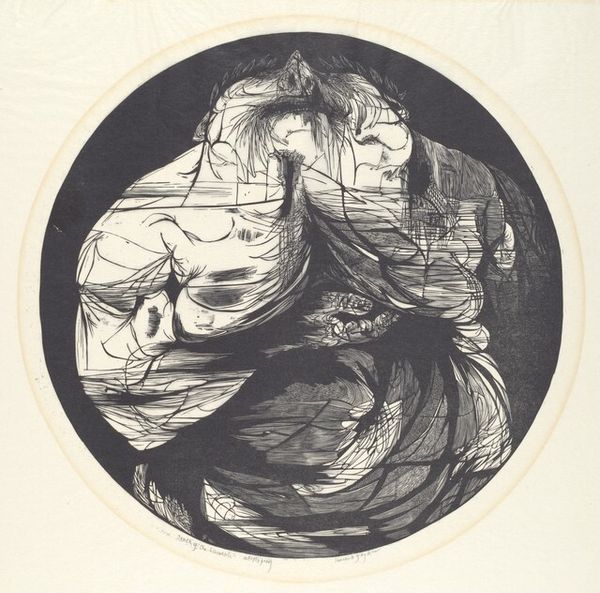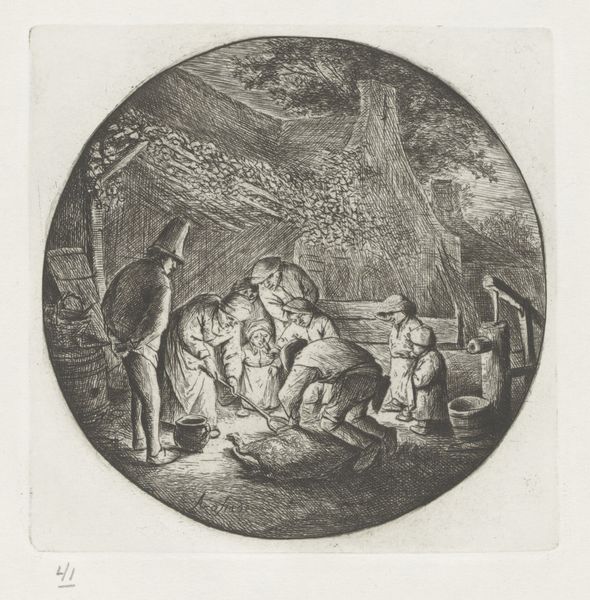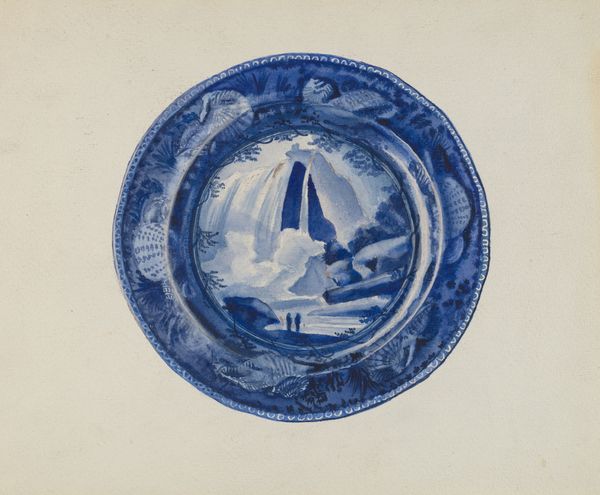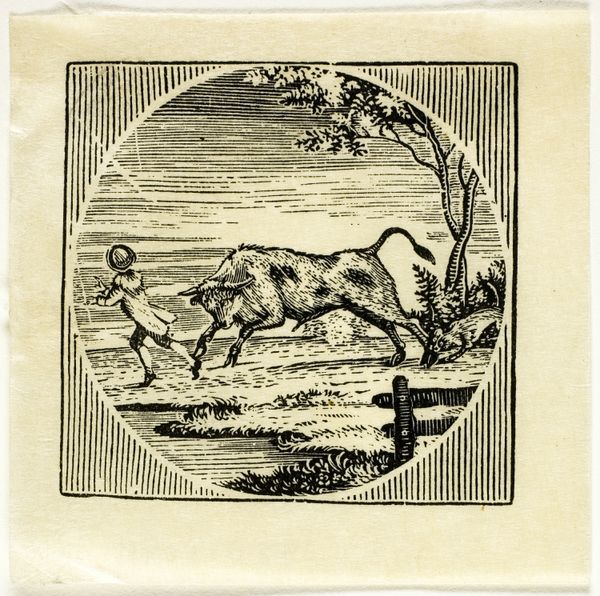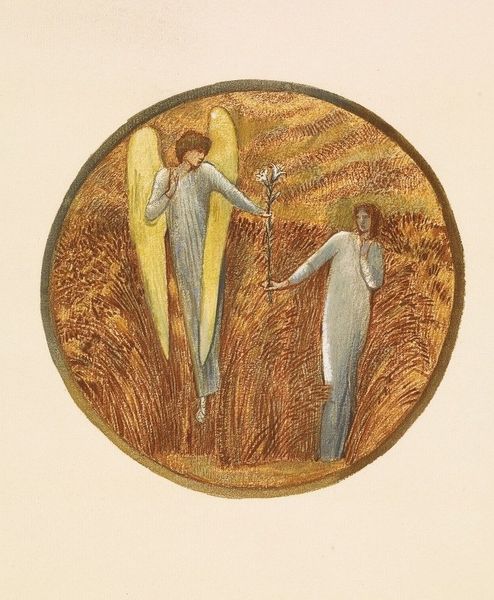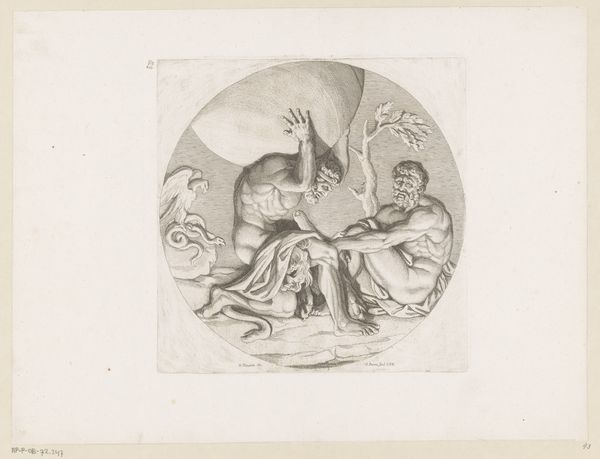
Copyright: Public Domain: Artvee
Curator: This is Edward Burne-Jones' "Flame Heath," created in 1905 using watercolor and drawing techniques. What are your initial thoughts? Editor: Immediately, I'm struck by the color palette. It evokes a sense of otherworldly serenity—like a figure existing just beyond the veil of reality. And the composition is surprisingly engaging, it invites you in. Curator: It’s intriguing to consider Burne-Jones' artistic circle and how their shared fascination with Romanticism influenced his artistic process. One sees elements of the Pre-Raphaelites’ penchant for detailed depictions of nature alongside their dedication to mythology. The watercolor medium allows a fluidity that matches this work. Editor: Absolutely. And those washes of colour, particularly the fiery yellows and cool blues of the background, draw the eye. It creates a juxtaposition within a compressed format. But what's truly arresting is the subject position, almost like an ornament floating on top of these dreamlike swirls. Curator: Consider the materials and production: the subtle gradations achieved with watercolour required significant skill, showing how labor impacts how the dream state is interpreted on paper. He skillfully merged artistic ability with popular romantic sensibilities of the time. Editor: It raises questions, doesn't it? Is she floating, sleeping, or perhaps even dying? The formal ambiguity fuels this interpretation. But one is pulled by the interplay between light and shadow across this reclining figure in the circular composition of the work. The detail is remarkable. Curator: Indeed, the ambiguity mirrors the state between consciousness and unconsciousness—perhaps reflective of the shifting social status during his era. His paintings suggest commentary on traditional class lines while the materials denote his class upbringing. Editor: Ultimately, Burne-Jones' piece compels you to engage—a visual paradox made tangible in the careful application of watercolor on paper, making "Flame Heath" such an introspective experience. Curator: Examining Burne-Jones’ "Flame Heath" through his social landscape and materials utilized to create its captivating scene offers more significant value in interpreting such fantastical elements.
Comments
No comments
Be the first to comment and join the conversation on the ultimate creative platform.
